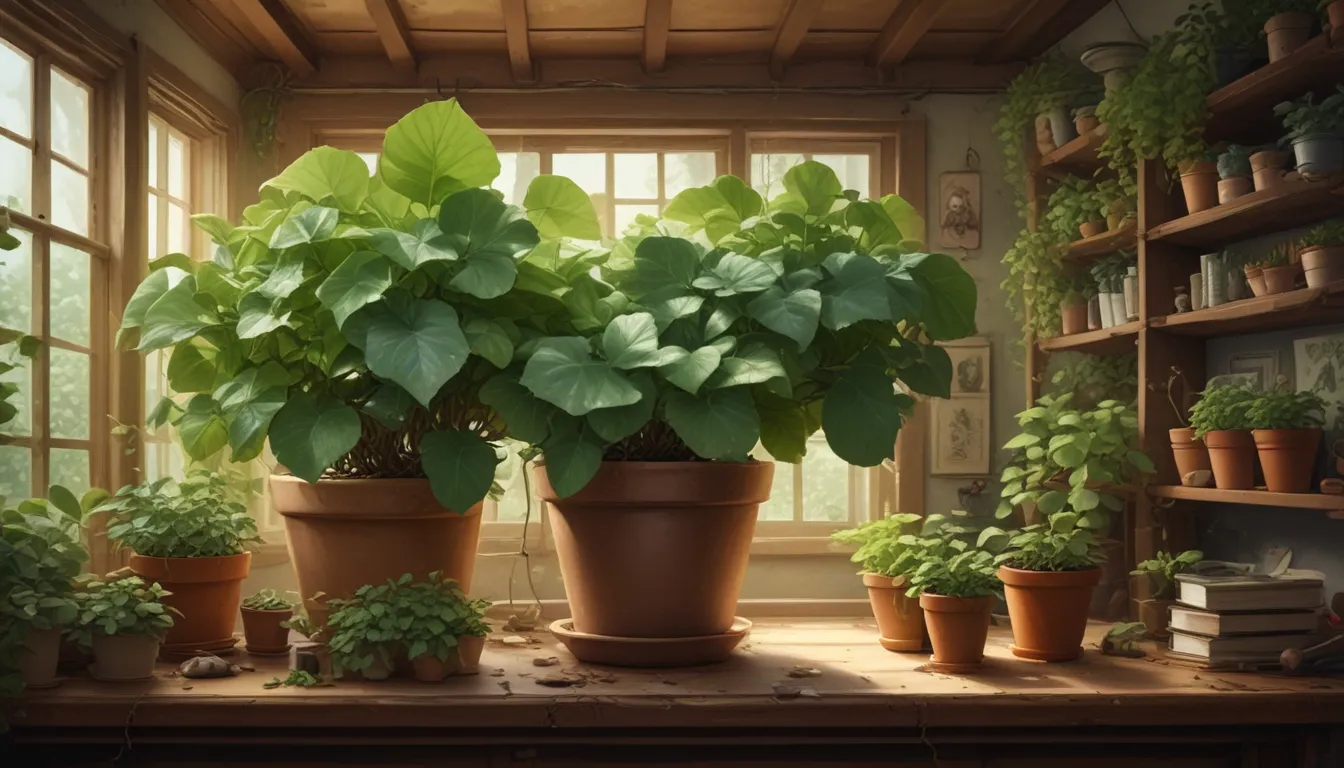How to Grow and Care for a Swedish Ivy Houseplant: A Complete Guide

Are you looking to add a touch of elegance to your home with a classic houseplant that has graced the halls of the Oval Office? Look no further than the Plectranthus verticillatus, also known as Swedish ivy or Swedish begonia.
This evergreen perennial in the mint family is a top choice for home gardeners due to its lovely, drooping growth habit that makes it perfect for hanging baskets. With its small, glossy green leaves and pale purple flowers in the fall, Swedish ivy is a beautiful addition to any indoor garden.
In this comprehensive guide, we’ll take you through everything you need to know to successfully grow and care for your Swedish Ivy. From propagation to pruning and maintenance, we’ve got you covered. So let’s dive in!
What Is Swedish Ivy?
Before we jump into care instructions, let’s get to know our star of the show a little better. Swedish ivy, or Plectranthus verticillatus, may be the most common species, but other related varieties can also be referred to as Swedish ivy. They all share similar care requirements and offer a selection of recommended varieties.
Originally from southern Africa, Swedish ivy is not actually native to Sweden, contrary to its name. The plant has been a popular houseplant for decades and boasts a rich history of being gifted and passed down through generations.
While it prefers bright, indirect sunlight and thrives in warmer temperatures, Swedish ivy can adapt to various environments, making it a versatile and low-maintenance addition to any indoor garden.
Propagation
One of the most exciting aspects of Swedish ivy is how easy it is to propagate. Whether you want to share cuttings with friends or expand your collection, propagation is a simple process. You can choose between stem cuttings or growing from seeds, depending on your preference.
Via Stem Cuttings
To propagate Swedish ivy via stem cuttings, select a healthy vine with younger leaves and cut a five to six-inch piece. Remove the lower leaves, leaving a few at the top intact. Place the cutting in a cup of water or potting mix, ensuring it gets enough sunlight and moisture.
Within a few weeks, you should start to see new roots forming on your cutting. Once the roots are established, transfer the cutting to a larger pot with fresh potting mix, and your Swedish ivy is well on its way to flourishing.
Transplanting
If you’re ready to move your rooted cutting to a larger pot, make sure to select a container with proper drainage holes and fill it with fresh potting mix. Carefully transplant the rooted cutting, making sure not to bury the stem too deeply. Water thoroughly and monitor its growth for signs of health and vitality.
How to Grow
Swedish ivy thrives in indirect sunlight and prefers moderate humidity. Make sure to water your plant regularly but avoid overwatering, as this can lead to root rot. Fertilize your plant every two to three weeks during the active growing season and move it outdoors during the summer for optimal growth conditions.
Growing Tips
- Water when the top 2-3 inches of soil dry out in spring/summer, or when the top 4-6 inches are dry in fall/winter
- Keep a humidifier near your plant during the winter
- Fertilize every 2-3 weeks during active growth
Pruning and Maintenance
While Swedish ivy is relatively low-maintenance, regular pruning is essential to promote healthy growth and maintain its shape. Pinch or cut off any leggy or unruly stems every couple of weeks to encourage branching and new growth. Additionally, prune back flowers after they fade to encourage new growth.
If your plant outgrows its container or shows signs of distress, consider repotting it into a larger pot with fresh potting mix. This will provide more space for its roots to grow and ensure its continued health and vitality.
Species and Cultivars to Select
Swedish ivy comes in various species and cultivars, each offering unique characteristics and colors. While Plectranthus verticillatus is the most common variety, you may also find variegated or purple-leaved options that add a pop of color to your indoor garden.
Look for cultivars like Plectranthus coleoides ‘Variegata’ or Plectranthus purpuratus for different leaf colors and patterns. These varieties can add visual interest to your display and create a vibrant focal point in your home.
Managing Pests and Disease
Thankfully, Swedish ivy is relatively resistant to pests and diseases. However, you may need to keep an eye out for spider mites and mealybugs, especially in dry or humid conditions. Regularly inspect your plant for signs of infestation and treat them promptly with appropriate remedies.
Additionally, watch out for root rot and leaf spot, which can occur due to overwatering or poor soil drainage. By maintaining proper watering practices and providing adequate sunlight, you can prevent these common issues and keep your Swedish ivy healthy and thriving.
Best Uses
Swedish ivy is a versatile plant that can be used in various ways to enhance your home decor. Whether placed on a mantle, bookshelf, or in a hanging basket, this plant adds a touch of elegance and charm to any room. Consider displaying it outdoors during the summer or using it as a border plant in your garden for a cheerful and welcoming atmosphere.
In Conclusion
Swedish ivy, with its rich history and easy-care nature, is a top choice for home gardeners looking to add a touch of green to their indoor spaces. By following the tips and guidelines provided in this guide, you can successfully grow and care for your Swedish ivy plant and enjoy its beauty for years to come.
Do you have a Swedish ivy plant at home? Share your stories and experiences in the comments below. We’d love to hear from you!
And if you’re looking for more houseplant care guides, be sure to check out our other articles on growing and caring for indoor plants. Happy gardening!





